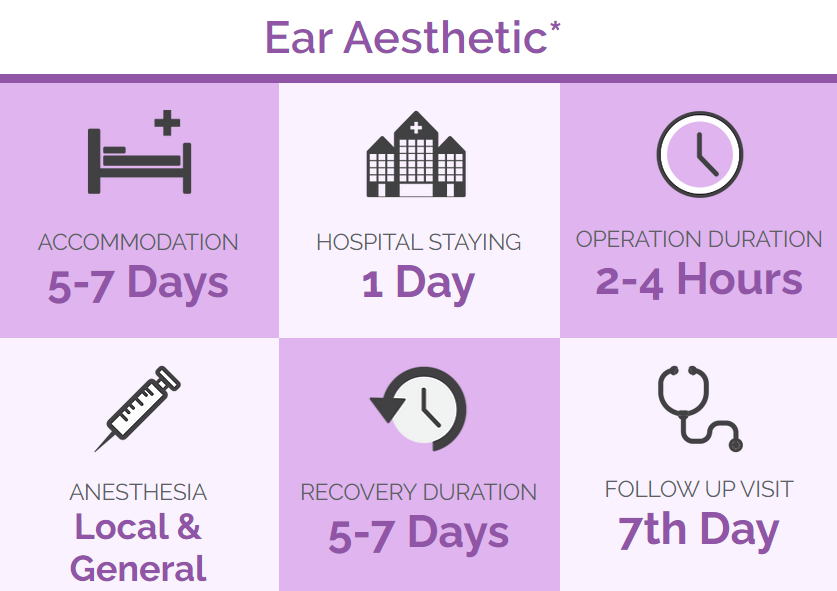Ear surgery or Otoplasty refers to the surgical and non-surgical correction of defects of the external ear or Pinna. Whether caused by blunt trauma or a congenital condition, otoplastic surgeries restore the external ear to its natural proportions by way of restructuring, repositioning and reinforcing the cartilage support framework of the external ear. One advantage of Otoplasty surgery is that it can be performed as soon as the ears are fully developed, which is usually around the age of 5 or 6. Although these surgeries are most commonly performed on children, adults can also be candidates.


Otoplasty is can be performed under local anesthesia and is completed in just 1-1,5 hours. During otoplasty, your surgeon makes a small incision behind the ear so that any resulting scars are completely hidden. Through these incisions, excess cartilage within the concha can be removed or the tissues can be manipulated so the ear is in a more flattering position.
After the surgery is complete, dressings are applied to the ears and should remain in place for about a week. Swelling is normal after an otoplasty but should dissipate within about a week to two weeks. Your surgeon may advise a headband be worn while sleeping to support the ears and ensure they heal as intended. Side sleeping should be avoided during the healing process.